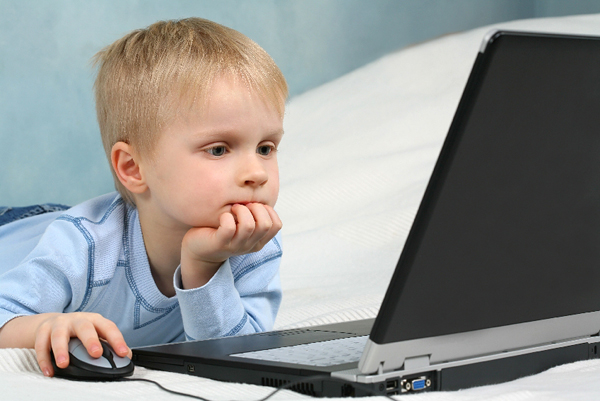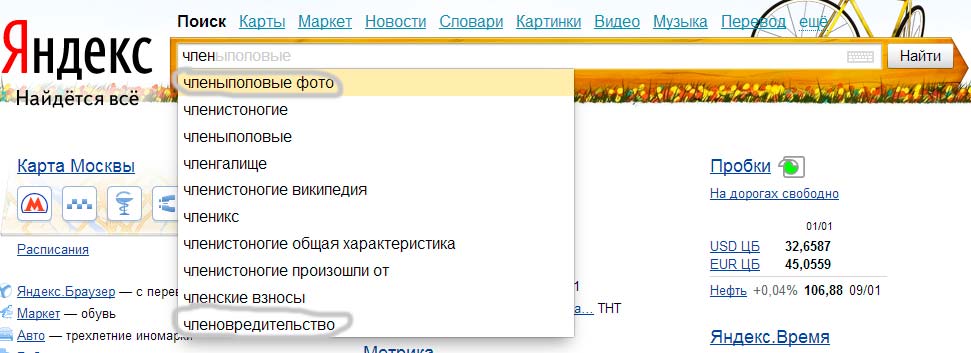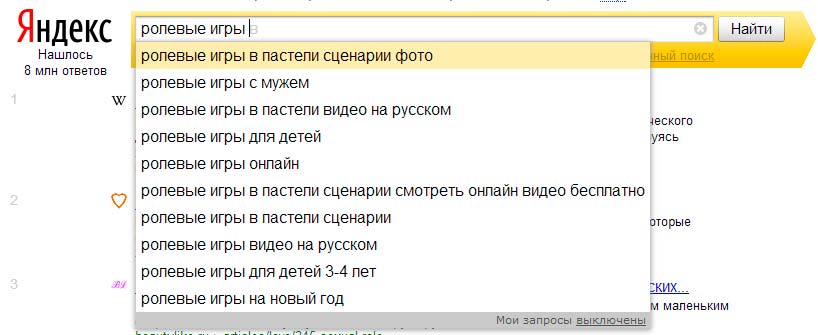About protecting children from dangerous information

Having seen a great interest in the topic of protecting children from harmful information in the comments to this post , I decided to study the issue further. It was interesting to find out what grounds there are now to believe that children generally need to be protected from any information, and, accordingly, how solutions to this issue are implemented in different countries. And also to speculate what solutions could still be implemented.
Types of information that could harm children
In my search, I began to build on the wording of the most recently adopted law . In general, other sources (for example, a report for the Council of Europe “Protecting children from harmful content” ) include similar types of
information.
The types of information listed in them can be grouped as follows:
- Propaganda . Information encouraging or promoting children with all sorts of socially ambiguous actions - damage to health or suicide, use of alcohol, tobacco and other narcotic substances, gambling, prostitution, begging, violence to people and animals, disrespect for the family and non-traditional sexual relations, offenses.
- Swearing and other abusive language.
- Pornographic information and sex as an image or description.
- Violence and frightening content . Directly image or description (not advertising) of violence, offenses, cruelty, illness, suicide, accident, accident or catastrophe and (or) their consequences;
- Personal information about the child , (in law - the victim of the offense), which allows to establish his identity and whereabouts
What says about the need to protect against this kind of information? Go through the points.
Promotion and advertising
According to a study by the American Psychological Association (APA): children under the age of 8 cannot critically evaluate television advertising messages and tend to find them useful, accurate, and objective.
Here is a Russian study with similar conclusions.
From the table it is clear that 55% of preschoolers believe in advertising. The attitude to advertising of younger schoolchildren is more conscious and critical, only 23–30% of children trust in advertising, more than half do not trust at all. Younger and older adolescents generally do not trust advertising messages.
According to another study published more than a decade ago in the journal Tobacco Control (UK), adolescents who are regularly exposed to a large amount of tobacco advertising will smoke with a 70% probability, while people with low exposure have chances of it eleven%.
Here are the recommendations of the Center for the Prevention of Suicides (USA) for the media. Such information can both help and push for this step or an attempt to imitate it. In particular, the detailed description of suicide, the romanticization of the deceased, the idealization of celebrities, the reaction of the relatives of the deceased, the overestimation of data on the frequency of suicides can harm. Information about the assistance provided, the history of people who have coped with
difficult situations without resorting to suicide; contacts of the hotline and specialists.
There are also many studies that claim that advertising affects children's eating habits:
- Children consume 45% more under the influence of food advertising.
- Children choose advertised products, despite parental guidance.
- Food and drink advertisements aimed at children and young people run counter to a healthy diet and put their health at risk.
')
Foul language
There is quite a bit of research on the effect on children of obscene language in the media, here is one of them , published in the official journal of the American Academy of Pediatricians Pediatrics. It argues that children who hear swear words on TV are more aggressive, and it’s not just obscene language. And aggressive children, in turn, are more prone to bullying.
It should be noted that the initial source of swear words in most children is still not the media, but the family and the environment, but, while parents prevent and prevent their use, using them in the media informs the child about their acceptability.
Pornography
According to the RAND report (a nonprofit organization in the United States engaged in research and analytics), frequent viewing of content with a sexual theme brings the beginning of teenage sexual activity closer, and this is influenced by both the demonstration of sexual behavior and just its discussion. Wherein
Information about the risks and consequences, methods of contraception can contribute to the establishment of a dialogue with parents.
An article on the BBC website tells us that teenagers can copy the sexual behavior shown in pornography, believing that these are normal actions in the sexual life of all people.
The 2010 UK Home Office report warned that creeping erotica and outright pornography into adolescent life distorts their self-perception: boys focus on machismo and domination, and girls feel obliged to be sexually accessible.
Violence and cruelty
The problem of the impact on children of violence in the media has been devoted to many years of research. In one of the articles on the website of the American Psychological Association, conclusions are drawn from the report of the National Institute of Mental Health on the main effects of frequent viewing of scenes of violence. Here they are:
- Children may become less sensitive to the pain and suffering of others.
- Children may be more afraid of the world around them.
- Children may be more likely to behave aggressively or harm other people.
Research by psychologists L. Hughesman, L. Eron, and others (USA), since the 1980s, showed that children who watched violence for hours on television when they were in elementary school usually show a higher level of aggressive behavior becoming teenagers. Observing these participants at a mature age, Huysman and Eron found that those who watched a lot of TV violence when they were 8 years old would most likely be arrested and brought to justice for
criminal acts as adults.
However, in later studies of psychologists D. Dzhentyle, B. Bushman (USA), among other things, it was assumed that the impact of violence in the media is only one of several factors that may contribute to aggressive behavior.
personal information
There are the following risks associated with the disclosure of personal information:
- Personal data can be used for fraud, spam, password guessing, hacking accounts, fraudsters can impersonate the person whose data they use.
- Using data on the locations where the child is usually located, criminals can meet with the child, kidnap him or harm him, and enter the house.
- Personal information can also be used for cyber bullying.
- Information about a person who has suffered from an offense can be his personal or family secret, used for threats from the accomplices of the offender.
By the way, in Russia, the protection of personal data is implemented by another Law on Personal Data , so it is not entirely clear that this item should be included in the law on the protection of children.
Issues in different countries
USA
In October 2000, the US Congress passed the Child Internet Protection Act (CIPA), which protects children from sexual and other unwanted material hosted on the Internet. The law prescribes libraries and schools participating in the federal Internet access program (as a condition of
obtain federal funding for E-Rate), install software filters that impede the viewing of materials
pornographic and other harmful content. Libraries are allowed to open access to certain sites at the request of adult users for scientific and other legal purposes.
Also in the USA there is a law on the protection of children's privacy on the Internet.
(COPPA).
The law applies to the collection of personal information from children under the age of 13 by individuals or organizations under US jurisdiction.
According to the law, the site administration must include in the privacy policy how to obtain parental consent or
guardians, and the administration’s responsibility to protect the privacy and safety of children on the Internet, including marketing restrictions. Although, despite the fact that children can publish personal information legally with the permission of their parents, most of the sites still block children due to the amount of work associated with this.
Also in some states there are local laws relating to cyber-prosecution and bullying.
Canada
Now in Canada there are no separate laws governing online content. To Canadian-hosted sites and residents of Canada whose sites
hosted on servers that are under a different jurisdiction, the requirements of general laws apply.
In November 2006, a number of leading Canadian Internet providers announced the “Cleanfeed Canada Project”; voluntary blocking of access to hundreds of alleged sites with child pornography. The list of blocked sites is compiled from reports of Internet users and investigated by independent
Cybertip.ca . Although it was a voluntary step without the participation of the authorities, the Canadian
the government expressed its approval.
Great Britain
Major Internet providers offer enabled content filtering by default, with the ability of the client to refuse to use it. The filter does not go through many categories of content: dating sites, drugs, tobacco, alcohol, file sharing, gambling and online games, social networks and forums, suicide and harm to health, weapons and violence, obscene vocabulary, criminal skills, hatred, anonymizers and so on .
Mobile operators have begun to voluntarily filter content since 2004. When entering a page with prohibited content, a warning page is issued. Adult users can disable this filtering.
The six main public Wi-Fi providers, who are totally responsible for its 90% share, also perform voluntary filtering.
There are problems with allowed sites under the action of filters. For example, about half of public Wi-Fi filters block religious sites, and a third - sites with sex education. Support services for people with problems related to the above topics, libraries and political sites are also mistakenly blocked.
Also in the UK, there is a Cleanfeed system that checks the URL for the presence in a confidential “blacklist URL” and returns “Page not found” in case of a match. Thus, the user cannot unambiguously determine whether the requested page was blocked or for some reason was simply not available on the site. The list of prohibited URLs is maintained by the non-governmental organization IWF .
Australia
The Australian Communications and Media Regulator (ACMA) is responsible for limiting Internet content hosted in Australia and maintaining a “blacklist” of websites hosted from outside. This list is then used by filtering systems that should be offered to all consumers by providers and the government of Australia. Here,
for example, a list of filters classified by age.
Singapore
Singapore also has a state regulator, MDA , which controls the Internet services of the three main providers. A number of websites containing “inappropriate” information are blocked, including Playboy, YouPorn and the Ashley Madison dating site.
In addition, the Singapore Ministry of Education is blocking access to pornographic and certain "objectionable" Internet content, including some torrent sites. When trying to gain access to a blocked site, visitors usually see an MDA message, although some pages display an error 404.
The list of blocked sites is confidential, it also includes sites related to homosexuality, Malaysian news sites, sites with anti-Islamic sentiments.
Sweden
In Sweden, the main Internet service providers use a DNS filter that blocks “obviously” illegal content, which include: calls for riot, racial agitation, child pornography, an illegal description of violence.
Swedish police are responsible for maintaining and updating the list of prohibited sites.
Also in Sweden, advertising for children under 12 is prohibited.
Netherlands
Here, the House of Representatives opposed filtering several times , although a plan was proposed to block child pornography, and a blacklist was made of sites hosted in countries where the Dutch authorities did not have the ability to track and harass. But by 2010, the list has thinned from 2,000 to 400 sites, and the report said that this means that there are almost no sites to block. For this reason, in 2011, the plan was withdrawn.
Germany
Requirements for the removal and restriction of access are imposed on German Internet providers, as a rule, to protect minors or to suppress the propaganda of hatred and extremism.
In 2009, a law was passed on blocking websites with child pornography, but in 2011 it was rejected due to the fact that providers and so quickly remove child pornography when they receive information about it.
Shared Internet for adults and children, is it possible?
Almost all news and media resources have acquired badges (12+, 16+, etc.). Yes, as long as it does not work, but it shows that the content on these sites can really be a danger to children.
Some examples to defuse.
What seems ordinary and simple to us (horrors, murders, sex, etc.) for children are the factors that shape the personality.
What can be done?
I will immediately answer the question: “Children will find this information (alcohol, cigarettes) elsewhere, what is the point of hiding it?”. Yes, but if we recognize the negative effect of information for children, then our task is to reduce the likelihood of receiving it. In the same way as reducing the likelihood of selling cigarettes and alcohol to children.
If some parents believe that it is already possible to tell this to children, they will tell it themselves. But I will note that some parents also believe that it is already normal to beat children, that forcing them to work for 8 hours is normal, etc.
So, if we still decide to protect children, then there are two logical choices: a separate Internet for children, hiding unwanted information from children.
In both cases, there should be a single registry of sites: the first with allowed sites, the second with blocked for children.
In the second case, it is also possible (or necessary) to block information on keywords and traffic analysis (photo, audio, video recognition).
By the way, regarding the first option in Russia there is a contest of positive sites , although so far it has no practical use.
Technical solutions
In any technical solution for protecting children, a filter should be installed somewhere, there can be no perfect technical solution, because the question lies in a principled plane, and therefore I would like to present the technical solutions as a survey (below).
Instead of conclusion
I would like the citizens, protecting their rights, not to forget about other people around them (even with a different opinion), and the government did not forget that their decisions should satisfy not them (and even not specialists in specific areas), but the majority of the population .
Source: https://habr.com/ru/post/208510/
All Articles

